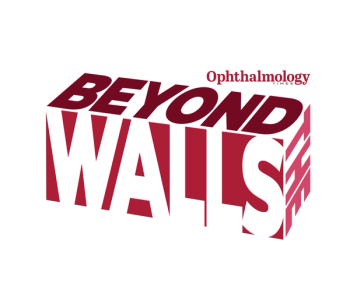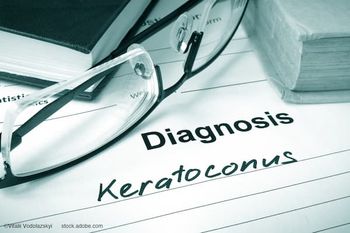
Confocal microscopy: Seeing what does not meet the eye
Limbal stem cell deficiency (LSCD) is an
LSCD signs include conjunctivalization and persistent epithelial defects with or without neovascularization, ocular surface inflammation, and scarring. The disease can be acquired non-immune-mediated, acquired primary immune-mediated, idiopathic, or inherited.
Related:
Diagnosis can be tricky because the disease presentation varies greatly with the degrees of severity of the stem cell deficiency, according to Sophie X. Deng, MD, PhD. This can range from stippling staining in the very early stage to a vortex configuration in the late stage with loss of the palisades of Vogt and vortex keratopathy.
A problem with LSCD is the difficulty in differentiating it from severe dry eye disease, according to Dr. Deng, professor, Stein Eye Institute, University of California, Los Angeles. LSCD can present with staining patterns not generally associated with the disease.
Physicians have used impression cytology to detect corneal goblet cells in LSCD, but the sensitivity of the technique is too low to establish a definitive diagnosis and the degree of the stem cell deficiency cannot be quantified.
Related:
Confocal microscopy
Confocal microscopy using the Heidelberg Retina Tomograph III (HRT) is a more reliable and rapid way to diagnose LSCD that visualizes all of the corneal microstructures from the epithelium to the endothelium, Dr. Deng explained.
“In vivo imaging using the HRT III has very high resolution, which facilitates visualization of individual cells, the nerve plexus, the conjunctiva/cornea junction, and the palisades of Vogt,” she said.
The goal of microscopy is detection of the changes in the cell morphology that are evident even in early-stage disease. Dr. Deng demonstrated that the corneal cells appear to enlarge with disease progression and become more metaplastic followed subsequently by the absence of stem cells altogether in the corneal epithelium. In the limbus, some eyes exhibit an influx of inflammatory cells.
Related:
In addition to visualization, confocal microscopy allows for the cellular changes to be quantified. She showed that the basal epithelial cell density in both the cornea and limbus, which is normal with a normal density of about 8,000/mm cells, declines significantly in the early, intermediate, and late disease stages.
Along with the changes in density, the mean basal cell diameter increases in LSCD with increasing disease severity. Confocal microscopy also can measure the epithelial thickness.
“The thicknesses of the corneal epithelium and the limbus decline gradually with the increasing severity of the stem cell deficiency,” Dr. Deng said.
Related:
A noteworthy point is that the subbasal nerve plexus disappears in LSCD of more advanced stages. She and her colleagues looked at 51 eyes of 37 patients with LSCD and found that there was almost a 47% decrease in the subbasal nerve plexus in the early stage of the disease, which continued to trend down in the intermediate and late stages. In addition to this finding, the tortuosity of the nerve increases with disease severity.
The imaging technology also can differentiate affected from unaffected corneal regions in the same eye.
Case report
Dr. Deng recounted the case of a 61-year-old woman with bilateral LSCD that was diagnosed by a clinical examination. The patient was referred for limbal stem cell transplantation or a keratoprosthesis. Neovascularization was present in four quadrants and the corneas were opaque. Confocal microscopy showed that the corneal epithelium was normal and the limbal epithelium was present in three quadrants and not the nasal quadrant. The diagnosis was actually minimal LSCD and a living-related keratolimbal transplantation was planned.
Sophie X. Deng, MD, PhD
E: [email protected]
Dr. Deng is a consultant to W. L. Gore & Associates, Inc., Dopme US, and the Kowa Research Institute, Inc. Dr. Deng receives research funding on limbal stem cells from the National Eye Institute and California Institute Regenerative Medicine.
Newsletter
Don’t miss out—get Ophthalmology Times updates on the latest clinical advancements and expert interviews, straight to your inbox.



















































.png)


